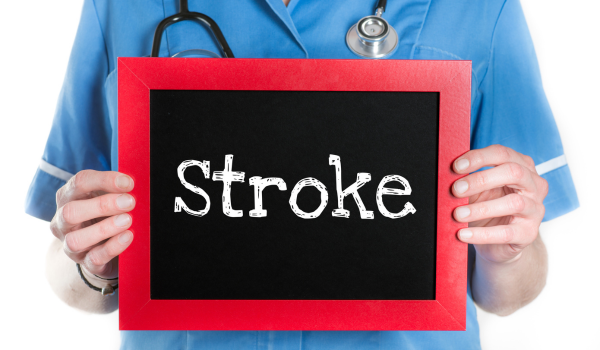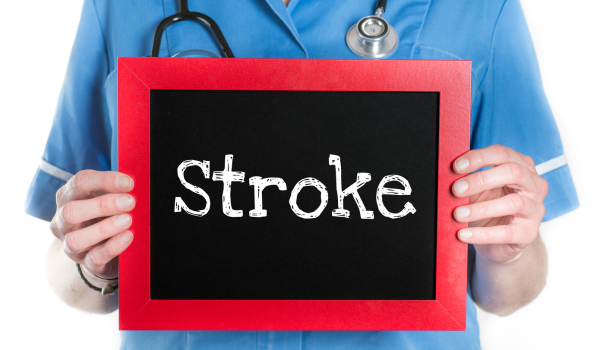.png)
Stroke is a leading cause of death and disability worldwide, but the good news is that many strokes can be prevented through lifestyle changes. By focusing on diet, exercise, and adopting healthier habits, you can significantly reduce your risk. This comprehensive guide will take you through some effective ways to prevent stroke, from the DASH diet to regular physical activity, smoking cessation, and stress reduction techniques.
1. DASH Diet: A Heart-Healthy Eating Plan
The Dietary Approaches to Stop Hypertension (DASH) diet is designed to lower blood pressure, which is one of the primary risk factors for stroke. This diet emphasizes:
-
Fruits and Vegetables: Aiming for at least 5 servings of fruits and vegetables a day, these foods are rich in potassium, magnesium, and fiber, which help to lower blood pressure.
-
Whole Grains: Incorporating whole grains such as brown rice, oats, and whole wheat bread into your meals provides a steady source of fiber that supports cardiovascular health.
-
Lean Proteins: Choose lean proteins like skinless poultry, fish, and legumes to reduce fat intake while promoting heart health.
-
Low-fat Dairy: Opt for low-fat or fat-free dairy products to help reduce saturated fat intake.
-
Nuts, Seeds, and Legumes: These provide essential nutrients, such as healthy fats and proteins, that are beneficial for overall cardiovascular health.
The DASH diet can also help in weight management, reducing the risk of hypertension, diabetes, and high cholesterol, all of which contribute to stroke.
2. Regular Exercise: Strengthening Your Heart and Blood Vessels
Regular physical activity is a cornerstone of stroke prevention. Exercising for at least 150 minutes a week, as recommended by the American Heart Association, can help:
-
Lower Blood Pressure: Exercise helps to relax the blood vessels, allowing for better circulation and reduced blood pressure.
-
Increase Good Cholesterol: Regular physical activity boosts levels of high-density lipoprotein (HDL), or good cholesterol, which helps prevent plaque buildup in arteries.
-
Improve Heart Function: Exercise strengthens the heart muscle, making it more efficient and less prone to cardiovascular problems.
-
Manage Weight: Exercise helps to maintain a healthy weight, which in turn lowers the risk of conditions like obesity, high blood pressure, and diabetes, all of which contribute to stroke risk.
3. Smoking Cessation: A Crucial Step Toward Stroke Prevention
Smoking is a major contributor to stroke risk, as it increases blood pressure, reduces oxygen in the blood, and damages blood vessels. Quitting smoking offers numerous health benefits, including:
-
Improved Blood Flow: Quitting smoking helps restore normal blood circulation and reduces the risk of clot formation.
-
Lowered Blood Pressure: Smoking cessation can lead to significant reductions in blood pressure levels, decreasing the risk of both ischemic and hemorrhagic strokes.
-
Healthier Lungs: Non-smokers have better lung function, which supports overall cardiovascular health.
It may be challenging to quit, but with the right support and resources, such as counseling or nicotine replacement therapy, you can reduce your stroke risk and enjoy a healthier life.
4. Stress Reduction: Managing Your Mental and Emotional Health
Chronic stress is a major contributor to stroke risk. It can lead to high blood pressure, poor diet choices, and unhealthy habits. Reducing stress can significantly lower your risk for stroke. Effective stress management strategies include:
-
Mindfulness and Meditation: Practices like mindfulness meditation and deep breathing exercises can help calm the nervous system and lower stress hormone levels.
-
Physical Activity: Regular exercise, as mentioned earlier, is an excellent way to manage stress by releasing endorphins, which are natural mood lifters.
-
Adequate Sleep: Ensuring you get enough rest helps to reduce the harmful effects of stress on the body and maintain overall health.
-
Social Support: Building strong relationships and seeking support from friends, family, or mental health professionals can help you cope with life’s challenges more effectively.
5. Maintaining a Healthy Weight: Key to Stroke Prevention
Obesity is a major risk factor for stroke, as it contributes to high blood pressure, diabetes, and high cholesterol. Maintaining a healthy weight through:
-
Calorie Control: Eating a balanced, nutrient-dense diet and monitoring portion sizes can help prevent excessive weight gain.
-
Physical Activity: Regular exercise helps burn calories and build muscle mass, promoting a healthy weight.
By achieving and maintaining a healthy weight, you reduce the strain on your cardiovascular system, lowering your risk of stroke.
6. Monitoring and Managing Health Conditions
Some health conditions, like high blood pressure, diabetes, and high cholesterol, directly contribute to an increased risk of stroke. It is crucial to:
-
Regularly Check Blood Pressure: Monitoring blood pressure and keeping it under control through diet, exercise, and medication (if prescribed) is key in preventing stroke.
-
Manage Diabetes: Keeping blood sugar levels within a healthy range is vital in reducing the risk of stroke. Work with your healthcare provider to develop a plan.
-
Cholesterol Management: Monitoring cholesterol levels and keeping them under control through diet, exercise, and medication can reduce plaque buildup in arteries, preventing strokes.
.png)
.png)
.png)
.png)
.png)
.png)
.png)
.png)
.png)
.png)
.png)
.png)
.png)
.png)








